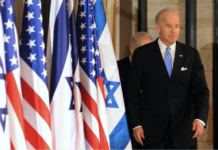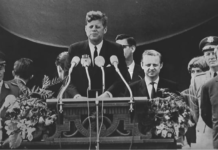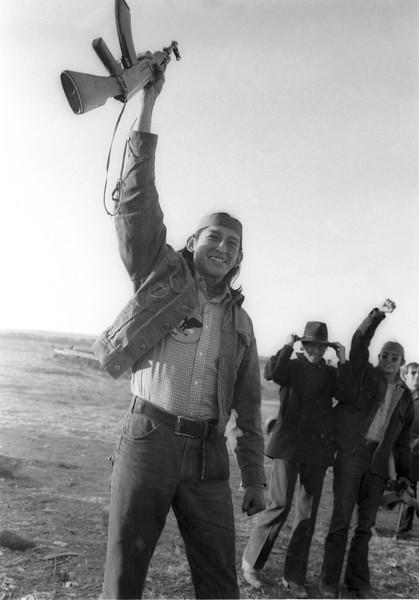
Dear Jeremy, Pearl after pearl spews forth from your agitated fingers. Here is one I wish to comment upon: Secret COINTELPRO Plot to Infiltrate and Destroy the American Indian Movement: “We Wanted Them to Kill Each Other”—FBI Agent Admits After 5 Decades of Silence.
“In a 2019 documentary that aired on PBS, From Wounded Knee to Standing Rock: A Reporter’s Journey, filmmaker Kevin McKiernan interviewed Tom Parker, an FBI agent working for the FBI’s counter-intelligence operation (COINTELPRO), who admitted that the FBI had helped to fracture and disrupt AIM during its 1973 Wounded Knee occupation.”
“[W]e wanted them to kill each other, as we were in a war against AIM,” Parker said.
Your story brings back telling memories about your theme. I want to tell you about my experience at Pine Ridge during the 1973 Wounded Knee uprising. I was then the Los Angeles Free Press political reporter. At that time, we had around 70,000 weekly sales. The two small-business men owners thought it great that I wanted to support that struggle and allowed expenses for me to hire a car and drive there. I was with around 300-400 Lakota Oglala Sioux and some from other tribes, and about 70-100 Chicanos (including revolutionary “Venceremos”), and some whites and two blacks. Some of the whites had been in Vietnam and become Vietnam Veterans for Peace.
I helped the leadership with media/PR work, and roamed about interviewing and photographing. I observed 349 people sworn-in as citizens of the new Independent Oglala Nation (ION). Most were Native Americans and residents of Pine Ridge concentration camp, then ruled by the half-white, brutal Dick Wilson’s Guardians of the Oglala Nation (Goons) whose goons killed many Indians before and after the occupation. Some Chicanos became dual citizens, as did seven whites.
Medicine man and spiritual leader Leonard Crow Dog swore them in. I became close with him and other leaders, such as Dennis Banks and Clyde Bellecourt, who founded AIM in 1968. Russell Means was also a leader. I felt he was too self-aggrandizing.
Nixon’s assistant attorney general Harlington Wood led the Federal Marshals and FBI (around 300) with weapons such as M-16s and 60-caliber automatic machine guns. He presented Dennis Banks with surrender demands without concessions. I saw Wood grin at our leader as he walked away.
Soon, the enemy opened fire. A Chicano medic was wounded close to me. Crow Dog removed the bullet from his stomach. This was the fourth gun battle in three weeks. The defenders only had light rifles and pistols. During the 71-day occupation, two Native Americans were killed; no enemy died.
An ABC cameraman said he thought government personnel opened fire to see what our response would be. Nevertheless, media reported what the government said: AIM opened fire first.
The leadership asked me to leave at the end of one week to help organize demonstrations and to deliver a message to the Rosebud reservation where Crow Dog was born. His father was its spiritual leader-medicine man, and his people were helping with supplies. I drove about 100 miles to where his father lived. At the entrance, armed guards saw the letter I was carrying and took me to the medicine man’s tent where a couple dozen people slept. The medicine man asked me to read the letter to him. His son asked for more supplies and ammunition and how to get them there. He closed with, “If I should be killed, I want to be buried by the Native American Church but no bible.”
I drove the rest of the night to Rapid City, then San Francisco and on to L.A. where I stopped to speak with activists to organize actions. And without sleeping, I went directly to the Free Press office and wrote one of my best pieces, which ended with four printed pages of text and my photos. It was published in the March 23-April 2, 1973 edition: “Wounded Knee: New Indian nation secedes from Union: No plans to surrender to government.”
During the 71-day occupation, two Native Americans were killed; Frank Clearwater (Cherokee and Apache) and Lawrence “Buddy” Lamont (Oglala). Several were wounded and many others arrested.
“The activists ultimately surrendered on May 8 after officials promised to investigate their complaints.” Some reforms were promised. On the 50th anniversary of the Wounded Knee occupation, a journalist reflects : NPR
The military response was overwhelming. Half a million rounds were fired into Wounded Knee, including some from a .50-caliber machine gun that fired two-inch diameter shells; fighter jets loomed overhead; and armored personnel carriers roamed the perimeter. The government cut power and water and forced the media out at gunpoint. In spite of the horrible conditions—food shortages and a late winter storm—people held their ground.
The U.S. government was worried that Wounded Knee would become an example others would follow. A high-ranking BIA official expressed alarm over his view that Wounded Knee had ‘crystallized a revolutionary movement in the United States.
(“Buddy Lamont, an Oglala Sioux and Vietnam veteran well-liked on Pine Ridge, was struck down by a sniper. His great grandparents had been with Crazy Horse at the Little Bighorn battle; his grandmother was one of the few to survive the 1890 Wounded Knee massacre”).
The militants were disarmed and 120 were arrested. In the end, 1,200 people nationwide were arrested for Wounded Knee, and 500 aim activists were indicted. Almost all the defendants indicted for their direct involvement in the occupation were acquitted.
AIM’s struggle for liberation from government controls and abuses occurred during other protests for equality and peace opposing institutional racism and U.S.’s war against Southeast Asia. They received a great amount of popular support, and from some celebrities, among them Marlon Brando.
“On March 27, 1973, the actor Marlon Brando declines the Academy Award for Best Actor for his career-reviving performance in The Godfather. The actress and activist Sacheen Littlefeather attended the ceremony in Brando’s place, stating that the actor ‘very regretfully’ could not accept the award, as he was protesting Hollywood’s portrayal of Native Americans in film.” Marlon Brando declines Best Actor Oscar – HISTORY
“His Oscar statement expressed support for the American Indian Movement (AIM) and referenced the ongoing situation at Wounded Knee, the South Dakota town that had been seized by AIM members the previous month and was currently under siege by U.S. military forces. Wounded Knee had also been the site of a massacre of Native Americans by U.S. government forces in 1890.”
Following the end of AIM’s Wounded Knee occupation, many Native American activists continued to be harassed. Pine Ridge continued to be a center of violence. Leonard Peltier was arrested for allegedly killing two FBI agents at the reservation, in 1975, not connected with the occupation. Crow Dog was later arrested for allegedly being involved. The trumped-up charges were clear and worldwide support convinced a federal judge to release him after serving two years. Peltier was convicted for murder with life imprisonment, in 1977. He is still imprisoned, 46 years. International Leonard Peltier Defense Committee | #FreeLeonardPeltier (whoisleonardpeltier.info)
“Numerous doubts have been raised over Peltier’s guilt and the fairness of his trial, based on allegations and inconsistencies in the FBI and prosecution’s handling of the case…The police officer that arrested Peltier is convinced that he ‘was extradited illegally and that he didn’t get a fair trial in the United States.´” Leonard Peltier – Wikipedia
In 1978, I was the L.A. Free Press’ managing editor, then under the wild Larry Flynt ownership. We covered “The Longest Walk” of Native Americans from Black Hills, South Dakota to Washington DC.—3,200 miles during five months Crow Dog was a key part of that successful march of many thousands, supported by Muhammad Ali and Marlon Brando.
Crow Dog: Four Generations of Sioux Medicine Men – Leonard C. Dog – Google Bøger
Russel Means Betrayal
While Russell Means did not kill anyone, to my knowledge, he did help our enemy by aiding its strategy of splitting our movements. Means had been born on the Pine Ridge reservation and later lived as a child at Rosebud. He joined AIM shortly after its inception and became a key leader and a spokesperson. But later, he took up arms, at least verbally, with the CIA-backed MISURASATA faction of Miskito natives in northeast Nicaragua, in 1985 (Reagan time) against the Sandinista backed YATAMA grouping. (See Stephen Kinzer’s NYT piece U.S. INDIANS ENLIST IN THE MISKITO CAUSE – The New York Times (nytimes.com)
“Russell Means, 46 years old, a leader of the American Indian Movement, said at a news conference in San Jose last week that he hoped to recruit 90 to 100 ‘warriors from North America’ to join Miskito fighters to oppose the Sandinista Government.
“´I would go to Nicaragua with a shovel in one hand, a rifle in the other and a pipe of peace in my heart, and it would depend on the Sandinistas what would be used,” Mr. Means said. He added that he had been convinced by a visit to Nicaragua and by following the progress of sporadic talks between Mr. Rivera and Sandinista leaders that ”the only alternative left is to use a rifle.´”
“The Sandinista Government is embarked on a project to offer autonomy to the Atlantic Coast, and Interior Minister Tomas Borge has said the autonomy law will be decreed early next year.”
I worked directly for the Sandinista government in 1984, in public relations and journalism, and then was one of three leaders of the March for Peace in Central America in late 1985-early 1986. The Sandinistas fulfilled their promises to the native peoples. I was in their territory too.
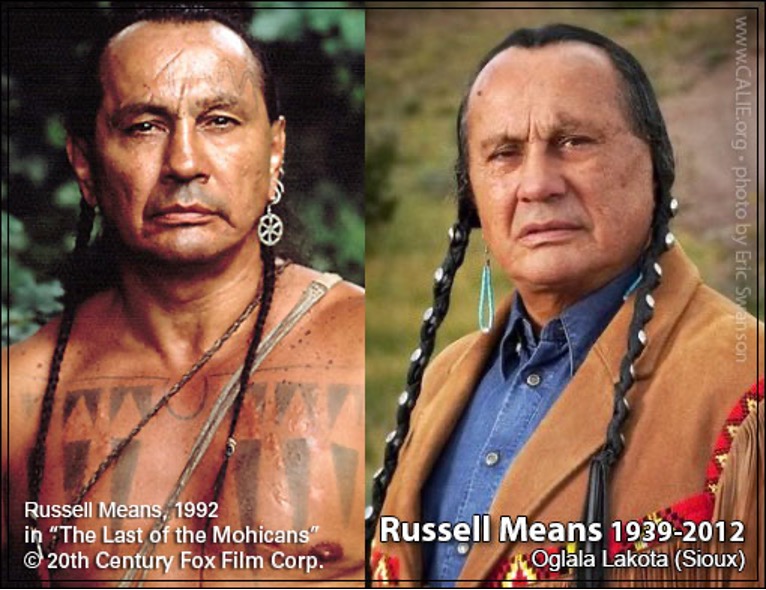
TOP 10 GREATEST INDIAN CHIEFS ~ Laugh Like We Are Having Fun (l0velifequotes.blogspot.com)
Here is some proof of what I contend, which is that the CIA had influenced the superstitious-super-natural believing Miskito people, many of whom had been dominated by Anglo-Saxon missionaries. Many inherited “Anglo affinity” in the 19th century. Later, the CIA gave them money, arms and military training. Philip Bourgois, “The Miskitu of Nicaragua: Politicized Ethnicity” on JSTOR and Charles R. Hale’s book, Resistance and Contradiction: Miskitu Indians and the Nicaraguan State, 1894-1997.
Since 1894, Miskitu people have faced an expansionist nation-state and have participated as well in a U.S.-controlled enclave economy and a civil society dominated by U.S. missionaries. The cultural logic of contemporary ethnic conflict, the book argues, can be found in the legacy of Miskitu responses to this dual subordination. While resisting the Nicaraguan state, Miskitu people drew closer to the Anglo-American institutions and worldview. These inherited premises of “Anglo affinity,” combined with militant ethnic demands, motivated the post-revolutionary mobilization. Sadinista revolutionary nationalism, in turn, had little tolerance for ethnic militancy, and even less for Anglo affinity. Only with autonomy negotiations did both sides begin to address these underlying causes of the conflict. Though portraying autonomy as a major step toward peaceful conflict resolution and more egalitarian ethnic relations, the nook concludes that this new political arrangement did not, and perhaps could not, fully overcome the contradictions from which it arose…contradictory consciousness illuminates the Sadinistas’ thought and practice: They too espoused a determined political militancy fused with assimilationist premises toward Indians, which created contradictions at the core of their egalitarian revolutionary vision.

CovertAction Magazine is made possible by subscriptions, orders and donations from readers like you.
Blow the Whistle on U.S. Imperialism
Click the whistle and donate
When you donate to CovertAction Magazine, you are supporting investigative journalism. Your contributions go directly to supporting the development, production, editing, and dissemination of the Magazine.
CovertAction Magazine does not receive corporate or government sponsorship. Yet, we hold a steadfast commitment to providing compensation for writers, editorial and technical support. Your support helps facilitate this compensation as well as increase the caliber of this work.
Please make a donation by clicking on the donate logo above and enter the amount and your credit or debit card information.
CovertAction Institute, Inc. (CAI) is a 501(c)(3) non-profit organization and your gift is tax-deductible for federal income purposes. CAI’s tax-exempt ID number is 87-2461683.
We sincerely thank you for your support.
Disclaimer: The contents of this article are the sole responsibility of the author(s). CovertAction Institute, Inc. (CAI), including its Board of Directors (BD), Editorial Board (EB), Advisory Board (AB), staff, volunteers and its projects (including CovertAction Magazine) are not responsible for any inaccurate or incorrect statement in this article. This article also does not necessarily represent the views the BD, the EB, the AB, staff, volunteers, or any members of its projects.
Differing viewpoints: CAM publishes articles with differing viewpoints in an effort to nurture vibrant debate and thoughtful critical analysis. Feel free to comment on the articles in the comment section and/or send your letters to the Editors, which we will publish in the Letters column.
Copyrighted Material: This web site may contain copyrighted material the use of which has not always been specifically authorized by the copyright owner. As a not-for-profit charitable organization incorporated in the State of New York, we are making such material available in an effort to advance the understanding of humanity’s problems and hopefully to help find solutions for those problems. We believe this constitutes a ‘fair use’ of any such copyrighted material as provided for in section 107 of the US Copyright Law. You can read more about ‘fair use’ and US Copyright Law at the Legal Information Institute of Cornell Law School.
Republishing: CovertAction Magazine (CAM) grants permission to cross-post CAM articles on not-for-profit community internet sites as long as the source is acknowledged together with a hyperlink to the original CovertAction Magazine article. Also, kindly let us know at info@CovertActionMagazine.com. For publication of CAM articles in print or other forms including commercial internet sites, contact: info@CovertActionMagazine.com.
By using this site, you agree to these terms above.
About the Author
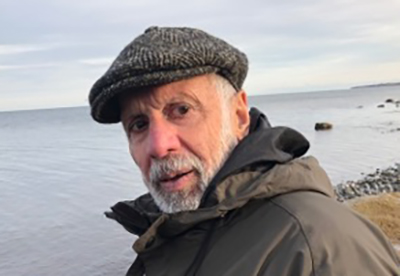
Ron Ridenour is a U.S.-born author and journalist, anti-war and civil rights activist since 1961. After joining the U.S. Air Force at 17, he saw the inner workings of U.S. imperialism first hand and resigned. In the 1980s and 1990’s he worked with the Nicaraguan government and on Cuban national media.
He now lives in Denmark and, in addition to writing a dozen books, has served as a special correspondent and freelance investigative journalist for many publications in the U.S. and several Latin American and European countries—among them: The Morning Star, New Statesman, The Guardian (U.S. and England), Playboy, Liberation News Service, Pacific News Service, Coast Magazine, Qui, Skeptic, Seven Days, and Pacifica Radio.
CAM co-founder Philip Agee wrote commentaries to two of his dozen books: Yankee Sandinistas: Interviews with North Americans Living and Working in the New Nicaragua, and Backfire: CIA’s Biggest Burn. See also: The Russian Peace Threat: Pentagon on Alert and Winding Brook Stories at Amazon and Lulu. Other work can be found at ronridenour.com.
Ron can be reached at ronrorama@gmail.com.


